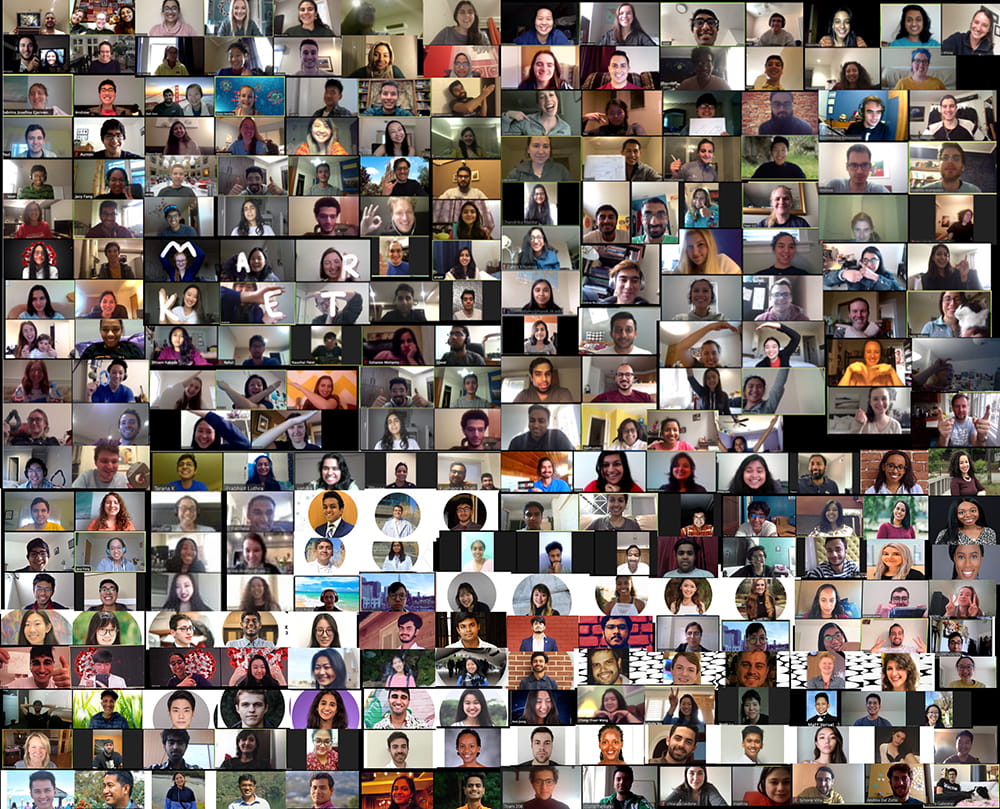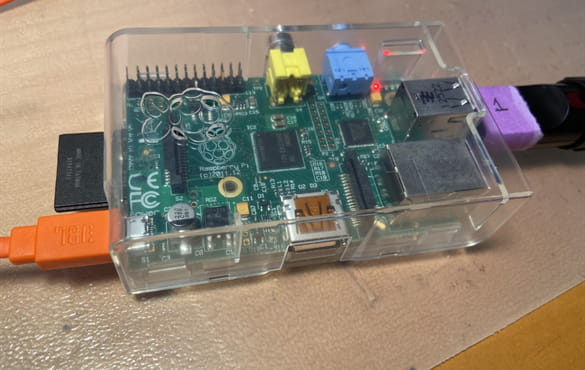Students answer the call to design solutions for COVID-19
Teams of students from the McKelvey School of Engineering took part in a virtual design challenge to help solve problems related to the novel coronavirus

As the COVID-19 pandemic continues, entrepreneurs and innovators around the world are working at unprecedented speeds to design solutions to limit its spread.
"This is affecting every one of us in one way or another, and I truly believe in the power of joint efforts," said Thao Cao, a senior majoring in biomedical engineering. "Doing something, even the smallest act, is contributing."
"This is probably the best time in the past 100 years to be studying biomedical engineering," said Evin Jaff, a first-year student majoring in biomedical engineering. "I was interested in being involved the solution, even if it was very incremental."
After learning about a COVID-19 virtual design competition, hosted by Johns Hopkins Center for Bioengineering Innovation and Design, the students felt compelled to take part. Teams were asked to find solutions for problems created by the novel coronavirus, including limiting the spread of the disease, informing the public or combating the shortages of supplies needed by front-line health care workers.
'Mister Clean'
Cao and her team came up with a sanitation station that would reduce the spread of the virus through health care providers' clothes. Her team members included Helena Hurbon, a senior majoring in biomedical engineering; Diana Griffin, a junior majoring in biomedical engineering; Emily Jayne, a master's student studying public health; and Rosie Dutt, a doctoral student studying imaging science.
"Professionals lack an efficient sanitation procedure for reducing the spread of COVID-19 when leaving the hospital and transitioning between departments," Cao said.
The team designed a device, named "Mister Clean," which consists of a walk-through decontamination system that sprays individuals and safety equipment with a chemical solution.
Their final design incorporated a specialized door frame with a tank attached that distributes a sanitizing solution using a five-headed atomizer.
"We came up with the design after a few rounds of brainstorming and evaluating," Cao said. "It was inspired by the need for an effective, broad and hands-free system to disinfect in hospitals and high-risk locations."
'Smart HEPA filters'
Jaff's team aimed to design a more efficient system for monitoring HEPA filters, which help minimize airborne transmission of the virus. His team members included Max Yu, a first-year student in the College of Arts & Sciences; Alaina Bohrer, a first-year Engineering student; Brandon Chow, a sophomore in the College of Arts & Sciences; Lilly Gonzalez, a student studying in the School of Law.
 "In ideal conditions, all hospitals would have enough negative pressure rooms to minimize the rate of airborne infection, but as the disease progresses, there is a good chance that we will exhaust our supply of negative pressure rooms," Jaff said. "An alternative the hospitals can use to meet high demand is using a HEPA-filter system, which induces similar negative pressure but is not nearly as precise and requires more frequent monitoring."
"In ideal conditions, all hospitals would have enough negative pressure rooms to minimize the rate of airborne infection, but as the disease progresses, there is a good chance that we will exhaust our supply of negative pressure rooms," Jaff said. "An alternative the hospitals can use to meet high demand is using a HEPA-filter system, which induces similar negative pressure but is not nearly as precise and requires more frequent monitoring."
Team members used microcontrollers and Internet of Things technology to design a system that would automate the required routine monitoring and alert nurses when the system needed manual configuration. Currently, HEPA systems are routinely checked by a nurse for any issues and nurses often expend valuable PPE equipment to monitor the systems.
"Our group focused on automating that process, allowing nurses and health care workers more time to focus on other duties, whether that be taking care of COVID19 patients or any other sort of work they need to do," Jaff said.
Long-distance collaboration
One of the biggest challenges the teams faced was collaborating remotely. With team members spread throughout the country, work had to be completed across time zones using Zoom, Google Docs and social media.
"It was a unique experience working remotely," Cao said. "I remember waking up early and Zooming into as many expert sessions to learn and brainstorm with my team. We had to deal with power loss, low internet connection, dogs barking and not being able to create an actual prototype together."
While the teams weren't selected as finalists, they did receive favorable feedback from the judges.
"We were encouraged to continue with our idea and look for support from other organizations, such as the Gates Foundation, since what we designed has powerful applications for less wealthy countries that want an inexpensive but effective alternative to negative pressure rooms," Jaff said.
"We focused on the easy implementation criteria when brainstorming so we had a mature workflow in place for product development," Cao said. "The prototype has high potential beyond addressing the COVID-19 pandemic, and we're positive we can carry on with the next steps."



